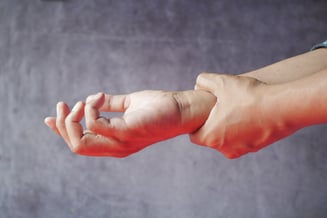 On October 24, 2023, WorkSafeBC, British Columbia’s provincial occupational health and safety (OHS) regulator and workers’ compensation overseer, issued a reminder to employers to address the hazards of workplace slips, trips and falls. The reminder began with a recitation that approximately 20 percent of all workplace injuries in the province relate to slips, trips, and falls. The agency also reported that “in the past six years, almost 41,000 workers in B.C. suffered slip-trip-and-fall injuries, including fractures, sprains, and dislocations.” The agency notice follows these statistics with reminders of what employers can and should do to reduce the likelihood and severity of these injuries. The remainder of this note summarizes this information.`
On October 24, 2023, WorkSafeBC, British Columbia’s provincial occupational health and safety (OHS) regulator and workers’ compensation overseer, issued a reminder to employers to address the hazards of workplace slips, trips and falls. The reminder began with a recitation that approximately 20 percent of all workplace injuries in the province relate to slips, trips, and falls. The agency also reported that “in the past six years, almost 41,000 workers in B.C. suffered slip-trip-and-fall injuries, including fractures, sprains, and dislocations.” The agency notice follows these statistics with reminders of what employers can and should do to reduce the likelihood and severity of these injuries. The remainder of this note summarizes this information.`
What measures is WorkSafeBC recommending?
- Identify risks and establish controls
BC’s OHS regulations assign employers a general duty to evaluate their workplaces to identify potential occupational hazards. These efforts include workplace self-inspections to evaluate activities, equipment, procedures, and the physical layout of the workplace. Once potential hazards are identified, employers are to undertake efforts to reduce and manage them. OHS laws and regulations define a hierarchy of control efforts, consisting of elimination (perhaps by substitution of key elements), engineering controls, administrative controls, and worker protective measures (personal protective equipment (PPE) and clothing). The agency also encourages employers to engage their workers and joint health and safety committees early in hazard identification and management.
For slip, trip and fall hazards, WorkPlaceBC’s “Slips,trips & falls” webpage notes the following:
- Slips happen where there is not enough grip or traction between the footwear and the walking surface. This can be a result of water, oil, grease, or dust on the floor. Loose rugs or mats, floors with varying traction, and the wrong footwear can also cause slips.
- Trips and falls can happen when people lose their balance after their feet collide with objects. Common tripping hazards in the workplace include: Damaged or worn carpets, rugs, and mats.
- Uneven flooring
- Cluttered walkways
- Uncovered cables
- Poor lighting
- Obstructed views
Accordingly, examples of employer actions include the following:
- Install electrical wires, cords, and hoses where they won’t create tripping hazards.
- Install covers, drip pans, containers, or containment rooms to prevent the release of contaminants from equipment to the floor.
- Make sure all tools, equipment, and materials are stored in their designated locations.
- Determine the right type of footwear for workers to wear based on the slip and trip hazards in the workplace.
WorkSafeBC notes that slip, trip and fall injuries increase by approximately 11% during winter months, because of rain and snow, so the latest information recommends that employers revisit workplace conditions and controls in anticipation of inclement weather.
Now what?
Employer responsibilities to identify and manage these hazards are ongoing, in all OHS jurisdictions in North America. (I wrote recently about the US Occupational Safety and Health Administration (OSHA) National Emphasis Program addressing fall hazards HERE). WorkSafeBC’s reminder, particularly coming as winter approaches, provides a useful reminder to consider these hazards and responses to them.
Self-Assessment Checklist
Do any of my organization's workers work in situations subject to slipping hazards?
If so, does the organization provide appropriate:
- workplace floor surfaces to reduce slipperiness?
- management of liquids and fine materials to minimize spills, and promptly lean up those that occur?
Do the organization’s workplaces manage materials in workplaces to minimize tripping hazards?
Do any of my organization's workers work in situations subject to fall hazards, including:
- fall hazards (generally 4 feet or more)?
- Hazards from falling materials?
If so, does the organization provide appropriate:
- Fall protections
- Protections from falling materials
- Training
Where Can I Go For More Information?
- WorkSafeBC, “Slips, trips & falls” webpage
- Canadian Centre for Occupational Health and Safety (CCOHS), “Slips. Trips and falls” webpage
- OSHA
- “Fall Protection” webpage
- “Walking-Working Surfaces and Fall Protection rule” webpage
About the Author
 Jon Elliott is President of Touchstone Environmental and has been a major contributor to STP’s product range for over 30 years.
Jon Elliott is President of Touchstone Environmental and has been a major contributor to STP’s product range for over 30 years.
Mr. Elliott has a diverse educational background. In addition to his Juris Doctor (University of California, Boalt Hall School of Law, 1981), he holds a Master of Public Policy (Goldman School of Public Policy [GSPP], UC Berkeley, 1980), and a Bachelor of Science in Mechanical Engineering (Princeton University, 1977).
Mr. Elliott is active in professional and community organizations. In addition, he is a past chairman of the Board of Directors of the GSPP Alumni Association, and past member of the Executive Committee of the State Bar of California's Environmental Law Section (including past chair of its Legislative Committee).
You may contact Mr. Elliott directly at: tei@ix.netcom.com
